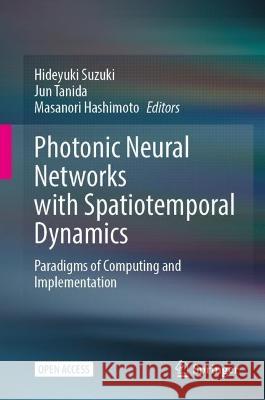Photonic Neural Networks with Spatiotemporal Dynamics: Paradigms of Computing and Implementation » książka
topmenu
Photonic Neural Networks with Spatiotemporal Dynamics: Paradigms of Computing and Implementation
ISBN-13: 9789819950713 / Angielski
Photonic Neural Networks with Spatiotemporal Dynamics: Paradigms of Computing and Implementation
ISBN-13: 9789819950713 / Angielski
cena 200,77
(netto: 191,21 VAT: 5%)
Najniższa cena z 30 dni: 192,74
(netto: 191,21 VAT: 5%)
Najniższa cena z 30 dni: 192,74
Termin realizacji zamówienia:
ok. 22 dni roboczych.
ok. 22 dni roboczych.
Darmowa dostawa!
Kategorie:
Kategorie BISAC:
Wydawca:
Springer
Język:
Angielski
ISBN-13:
9789819950713











